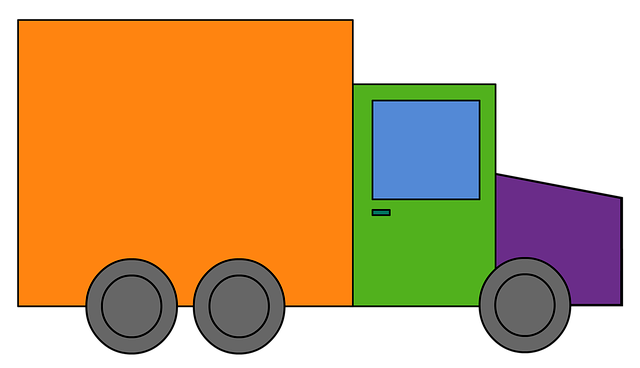Looking to register your car in California? This comprehensive guide breaks down the process step-by-step. From understanding the registration requirements to gathering essential documents, you’ll learn everything you need to know. A key aspect is accurate VIN verification, ensuring your vehicle’s authenticity. Discover the necessary paperwork, application submission tips, and common FAQs addressed. Optimize your experience with these insights and get your California car registration done efficiently.
- Understanding the Registration Process
- Gathering Necessary Documents
- Vehicle Identification Number (VIN) Verification
- Submitting Your Application
- Important Considerations and Frequently Asked Questions
Understanding the Registration Process

Understanding the Registration Process in California
Registering a car in California involves several crucial steps, ensuring your vehicle is legally compliant and safe for operation within the state. The process begins with gathering essential documents, including proof of ownership, valid identification, and current insurance. Once prepared, you’ll need to visit a California Department of Motor Vehicles (DMV) office or use their online services for registration. A key component of this process is the Vehicle Identification Number (VIN) verification, which ensures the vehicle’s authenticity and helps prevent fraud.
During VIN inspection, your car’s unique identification number is cross-referenced with state records to confirm its history and ensure it meets safety standards. This step can be completed at a DMV office or through mobile vin verification services, offering flexibility for users. By combining traditional methods with innovative solutions like mobile vin inspection, the process becomes more accessible and efficient, allowing you to focus on enjoying your newly registered vehicle.
Gathering Necessary Documents

Before you begin the registration process, it’s crucial to gather all the essential documents required by the California Department of Motor Vehicles (DMV). One critical step is to verify your vehicle’s unique identifier, known as the Vehicle Identification Number (VIN), which serves as a digital fingerprint for your car. Many people opt for a mobile VIN verifier or perform a mobile VIN verification to ensure accuracy and save time. This process involves cross-referencing your VIN with official records to confirm the vehicle’s history, ownership, and any outstanding issues.
Having recent and accurate documentation is key. You’ll need your current registration card, proof of insurance, and a valid driver’s license or state ID. Additionally, you might require sales documents if you’re registering a newly purchased car, as well as proof of residency in California. These documents work together to facilitate the registration process smoothly.
Vehicle Identification Number (VIN) Verification

Before you can register your car in California, a crucial step is to verify the Vehicle Identification Number (VIN). This unique 17-character code is like the fingerprint of your vehicle and plays a vital role in ensuring its authenticity and history are accurately represented. A valid VIN inspection ensures that the car has not been reported as stolen, has no outstanding recalls, and meets all legal standards.
In California, you can have this done through a mobile vin verification service, which offers a convenient and often faster alternative to traditional methods. A mobile vin inspector will use specialized tools to cross-reference your VIN with national databases, providing you with an immediate report that includes detailed vehicle information. This streamlined process not only saves time but also guarantees a comprehensive vin inspection, giving you peace of mind when registering your car.
Submitting Your Application

After completing your California vehicle registration application, it’s time to submit it along with all required documents and fees to the appropriate agency. This typically involves visiting a local DMV office or, in some cases, utilizing an online submission method if available. A crucial step before submitting is ensuring your Vehicle Identification Number (VIN) is verified. Accurate VIN verification is essential to prevent fraud and ensure the vehicle’s history is accurately represented.
You can facilitate this process by engaging the services of a mobile vin inspection or using a reputable vin inspection provider. These professionals conduct thorough checks, cross-referencing data with various databases to confirm the vehicle’s identity and condition. By ensuring your VIN is verified, you streamline the registration process, making it faster and more efficient.
Important Considerations and Frequently Asked Questions

Before registering your car in California, there are several important considerations to keep in mind. One crucial step is ensuring that your vehicle’s VIN (Vehicle Identification Number) is accurately verified. This process, often facilitated by a mobile vin verifier or vin inspection, checks the authenticity of the VIN and helps prevent fraud. In California, all vehicles must pass this verification as part of the registration process to ensure road safety and deter stolen vehicle sales.
Frequently Asked Questions (FAQs) can provide valuable insights for first-time registrants. For instance, many wonder about the difference between a vin inspection and regular maintenance checks. It’s important to understand that a mobile vin inspection specifically focuses on verifying the VIN, while routine maintenance deals with overall vehicle condition. Additionally, Californians often inquire about the timeframe for completing the registration process after passing the VIN verification, which typically ranges from a few days to a week, depending on the department of motor vehicles’ (DMV) workload.
Registering a car in California involves several straightforward steps, from gathering essential documents to completing a VIN verification process. By understanding the registration procedure and ensuring all requirements are met, you can efficiently navigate the process. Remember to check the specific guidelines and fees as they may vary based on your vehicle’s type and age. Don’t forget the importance of accurate VIN verification for security and ownership confirmation. With these steps in mind, you’re well-prepared to register your vehicle and hit the California roads legally and confidently.



